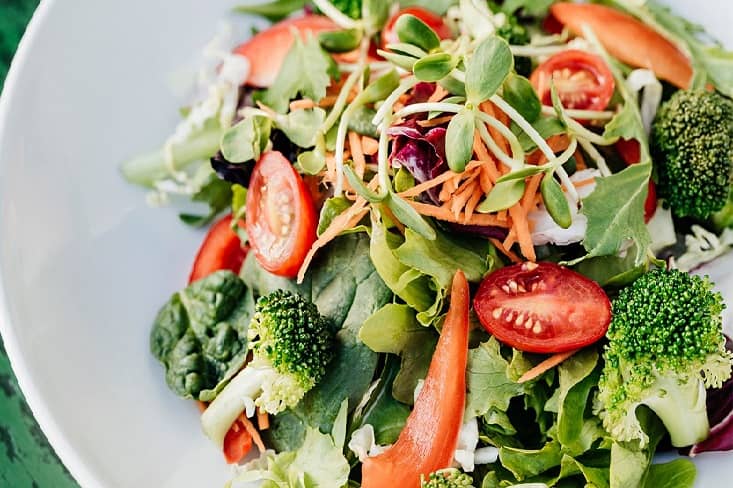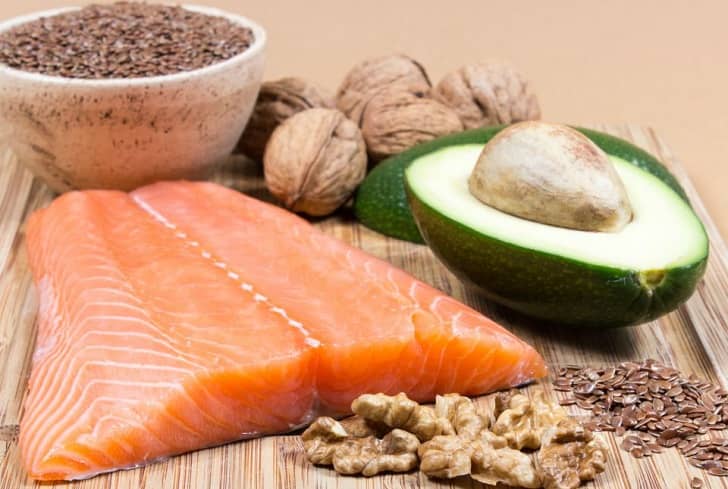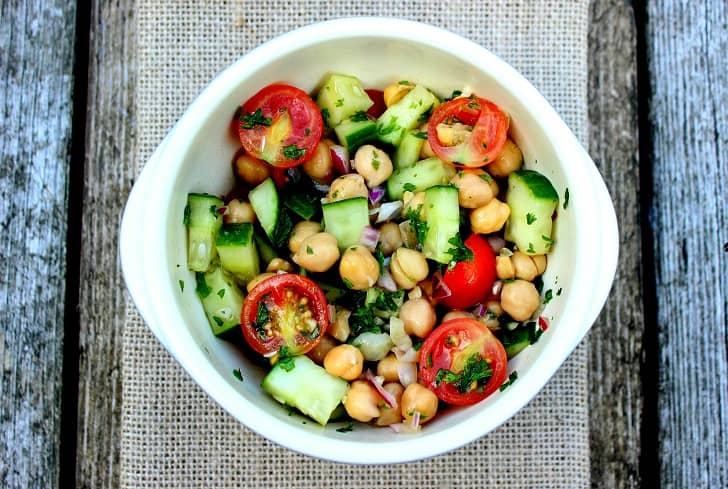Skin is the largest human organ and the most underestimated one.
While certain foods nourish your skin, some can cause skin irritation. Specifically, it troubles sensitive skin, sometimes causing beyond redness.
Rosacea is one of such common skin conditions. Not all foods trigger the skin condition, but not avoiding foods that cause rosacea flare up can worsen the situation for you.
Thus, dermatologists recommend a diet change before recommending over-the-counter ointment. Obviously, our skin is the result of our food intake.
In terms of Rosacea, the statement becomes more than true.
In this blog, we have shared the right rosacea diet to prevent the issue. Before, we show the list of good and bad foods for rosacea.
Let’s know what the skin condition actually is…
What Is Rosacea?
Table of Contents
National rosacea society defines the skin condition as a poorly understood disorder of the facial skin. In fact, it affects more than 16 million Americans and more than 415 million worldwide.
The condition causes a red flare on your face and pimples. It doesn’t only affect your appearance, but can be painful as well.
Other Symptoms Of Rosacea Include:
- Watery or irritated eyes
- Bumps or pimples on the face
- Small visible blood vessels on the face
- Redness on the nose, cheeks, chin, or forehead
These are common signs of rosacea. Still, the symptoms can vary from person to person. Before literally taking it as a skin disorder, consult your dermatologist.
Mostly, the skin condition can affect anyone of any age.
However, it is most common among middle-aged women with fair skin, blonde hair, and blues eyes.
Less common in men, still their rosacea symptoms are more severe.
Causes Of Rosacea
Mainly, people suffer from rosacea due to hereditary problems. Experts have identified other possible contributors as well.
The factors that cause rosacea include:
- Genetics
- An issue in the Immune system
- Helicobacter pylori (H. pylori) bacteria
- Mites on the skin, like Demodex
- problems with cathelicidin, a protein on the skin
These are possible causing factors in the skin condition, the exact causing factor is still a mystery. Dermatologists call it an inflammatory condition.
Rosacea Triggers
As the condition has an association with inflammation. There are various triggering factors developing the onset of the Rosacea.
This include
- Sun exposure
- sun-damage
- Stress or anxiety
- Exercise
- Changes in the weather (wind or humidity)
- Alcohol intake
- Smoking
Besides, some foods function as a trigger, while you have some foods that help rosacea inflammations.
In short, planning your diet by knowing foods that flare rosacea and foods to reduce rosacea manage the symptoms.
Rosacea Diet: The Best Foods For Rosacea
Unluckily, foods don’t treat rosacea, but they reduce inflammation. This is why people plan their rosacea diet in the first place to manage the redness and flares.
Adding these foods to your diet limits inflammation and reduces daily flare-ups.
#1. Anti-Inflammatory Foods

Inflammation is the key symptom of rosacea.
Whether you encounter redness or bumps or pimples, it deteriorates your appearance. On top of that, the pain is miserable with the flares up.
That’s why sticking to a healthy diet full of anti-inflammatory foods can help. Not only does this keep the rosacea symptoms in check but also nourishes your skin inside out.
There are various anti-inflammatory foods for rosacea you can try. This includes cherries, avocados, nuts, and beets.
Turmeric can also provide health benefits for your skin condition.
- You add a pinch of the spice in foods to reduce rosacea.
Besides, having anti-inflammatory properties, it is full of anti-oxidants. In short, it is completely beneficial for your skin problem.
#2. Cruciferous vegetables

These foods belong to the Brassica genus. This includes mainly kale, broccoli, cabbage, cauliflower, and more. In other words, it’s sort of any deep green, leafy veg.
Including them in your plant-based diet rosacea provides various health benefits.
Not only does it reduce inflammation but provides Vitamin E.
The antioxidant is essential for maintaining skin health and preventing free radical damage. In short, the antioxidant and anti-inflammatory components fight off the flare-ups.
#3. Omega-3s

Omega 3s foods also relieve the symptoms of rosacea. This includes foods like tuna, salmon, walnuts, and seeds.
These aren’t beneficial for reducing anti-inflammatory, but benefit heart health and brain health.
However, the Americans lack the nutrient making them prone to skin conditions. Thus, to maintain healthy nourished skin, you need to get enough of the nutrients.
It also reduces flaking, hyperpigmentation, flares, and redness.
#4. Gut-Healthy Foods

Pre-biotics are present in fiber-rich food. They feed the microbes and probiotics in your gut.
In other words, you need a mixture of both probiotic and prebiotic nutrients for better gut functioning.
Thus, you need to know what foods are good for rosacea and are prebiotic-rich. Not only do they keep rosacea flare-ups at the limit but calm your skin.
The best foods to eat for rosacea full of prebiotics are legumes, onions, garlic, walnuts, and bananas.
In contrast, the best Probiotics-rich fermented foods like kimchi, kefir, and miso.
- Add these foods to your inflammatory rosacea diet for better results.
Rosacea Diet Meal Plan: Foods To Prevent Outbreaks
- Lean proteins like chicken, turkey, and fish, in control
- Salmon; an omega-3s superfood for anti-inflammatory benefits
- Non-citrus, lower-acid fruits like melons, grapes, and mango
- Soothing spices like cardamom, coriander, fennel, saffron, and turmeric
- Goat cheese; a good source of easily digestible protein acting as an effective anti-inflammatory
- Ghee, an Indian clarified butter encompassing vitamins A, D, E, and K, strengthens your immune system.
- Neutral vegetables with high water amount, ex., cucumbers, leafy greens, broccoli, cauliflower, lettuce, asparagus, green beans, celery, pumpkins, sweet potatoes, okra, and zucchini
Adding these foods to your Rosacea Diet relieves inflammation while restoring your skin health.
Besides, you need to avoid the foods not to eat with rosacea.
The Worst Foods For Rosacea
Most probably you may encounter a flare-up due to foods that irritate rosacea. Thus, it’s crucial to remove the food from your diet to prevent the triggers. Also, it keeps the inflammation and redness within the limit.
Here are the top foods that affect rosacea:
#1. Alcohol
Actually, it results in stress on your skin triggering a histamine response. The side effect is the irritating inflammation.
However, not all alcohol has similar effects. Some people find rosacea and food allergies aren’t associated with beer.
This may be because of anti-inflammatory compounds arising while brewing beer.
#2. Spicy Foods
You have triggered rosacea after eating spicy food. Actually, the food can prompt a histamine response causing inflammation on your face.
This results in a flushed face, redness, bumps, and pimples. In fact, limiting spicy food intake is necessary, because it’s the most common triggering factor.
#3. Chocolate
Your favorite Chocolate encompasses a compound called cinnamaldehyde, which is responsible for its flavor.
However, it also acts as a trigger. Chocolate is also full of sugar, which again bad for rosacea.
This doesn’t mean you can’t ever enjoy chocolate. Also, it benefits your heart health and improves mental sharpness.
Nonetheless, you need to pay attention to see if it’s a trigger for you or not?
#4. High-Niacin Foods
Your immune cells are everywhere in your body. In your skin, they are called Langerhans cells.
Foods containing niacin, like tuna, poultry, peanuts, and crustaceans, trigger these cells.
Eventually, this results in redness, pimples, bumps, and pain in your skin. Also, another name for niacin is Vitamin B3.
The compound supports the nervous system, metabolism, and different body functions. So, you can’t completely prevent the nutrient from your diet.
If you find it a trigger for you, limit the intake.
To control rosacea and foods to avoid is a bit difficult, but is necessary. Lock this in your head.
#5. Foods with Histamine in them
Histamine can dilate your red blood vessels. This causes instant rosacea outbreaks. Thus, it becomes important to avoid food with histamines.
You have to exclude tomatoes, citrus fruit, legumes, chocolate, and nuts from your diet.
Other Foods That Trigger Rosacea Flare-Ups
- Starches and Sugars, triggers in individual cases
- Foods that discharge histamine, such as citrus fruits
- Shellfish, common allergens aggravate the discomfort of a rosacea outburst
- Dairy products like milk and cheese, comprising trans fatty acids (a general rosacea trigger)
- Drinks like alcohol and hot coffee or tea, which can dilate blood vessels leading to facial redness
- Foods comprising high levels of refined/concentrated sugars and sodium, like many processed foods.
- Pungent or high-acid vegetables like eggplant, hot peppers, onions, radishes, tomatoes, beets, carrots, and spinach.
To control the flare-ups, you need to know rosacea foods to eat and the foods not to eat. The above two segments have enlighten you on the two subjects.
When it comes to the Rosacea diet, the most important thing to understand is the trigger factor.
Almost any food can trigger flare-ups, in some cases, it may be different than usual.
How To Identify Rosacea Diet Triggers?
The trial and error method works best to discover your biggest food triggers. Begin by removing one food from each category. After two weeks examine if the inflammation has improved.
If the answer is affirmative, you have found your trigger. Now, eliminate it from your diet completely.
If lifestyle changes and switching to a rosacea diet plan don’t help, go for a specialist.
You can take it to the dermatologist. They can provide you with laser therapies, gels, topical creams, washes, and antibiotics applicable for treatment.
Or, you can check out other rosacea hacks…
What Else Can You Do to Help with Rosacea Aside from Diet?
The complete guide on how to calm rosacea flare-up involves more than diet change.
Here’s the top recommendation to fight off Rosacea.
1: Care for your Skin
Handle with care!
This statement is made for your skin. Rosacea patients should use lukewarm water and a mild, natural soap for cleansing.
- Never wash your face with extremely hot or cold water. Moreover, when drying instead of rubbing the towel, pat it on your skin.
If cleaning your face triggers Rosacea, take care of the quality of water.
2: Be attentive to the clothing material
Make sure your clothing material is cotton, organic cotton is even better.
Skip clothes raising your temperature around the face like neck jumpers or high neck dresses.
Moreover, avoid certain synthetic fibers like rayon, nylon, etc. which don’t allow the skin to breathe exacerbating the condition.
3: Apply SPF
Heat, weather, and UV damage are other triggers. So, applying SPF regularly is necessary to keep your skin under sun protection.
Use a non-irritating and hypo-allergenic SPF lotion or cream.
4: Avoid extreme temperatures
Heat and extreme temperature trigger inflammatory rosacea.
You don’t have any control over the humidity outside, still, inside the workplace, you can use a humidifier.
5: Pick the right skincare
Use the gentlest skincare product possible. this will keep the skin damage list.
Hence, limiting the possible rosacea outbreak due to cosmetic products.
6: Try topical steroid creams
These topical creams relieve rosacea symptoms. However, they don’t fight off the underlying condition.
You should only use them according to medical supervision.
These were a few things you can try apart from the Rosacea diet. Moreover, you can check out our FAQs section for more information…
Rosacea Diet for Healthy Skin – FAQ’s
Rosacea can arise many questions in our head if want to know How Your Diet May Help Reduce Rosacea Flare-Ups.
Here, we’ve taken such queries…
Q1: What Diet Is Good For Rosacea?
Anti-inflammatory foods are generally good for rosacea.
Besides, you can have foods high in omega-3s like salmon, tuna, nuts, seeds, eggs, peanut butter, and olive oil.
By having these foods you can heal rosacea with diet only. Not only do they limit the redness and blushing but reduce inflammation to a greater extent.
Q2: What Foods To Avoid If You Have Rosacea?
The rosacea food triggers list includes
- Hot beverages
- Spicy foods
- Alcohol
- Dairy
- Inflammatory foods
- Foods with histamine in them.
You need to exclude the above-listed food from your diet to prevent worsening of the flares up. Also, add anti-inflammatory food to your rosacea diet to balance up your nutrients.
Q3: How Do You Calm Down A Rosacea Flare-Up?
For instant help, applying an ice pack on the flares is really helpful. Also, you can apply creams and lotion suggested by dermatologists. Aloevera gel and green tea extracts are also soothing.
Nonetheless, you should keep your temperate in check for your sensitive skin.
Q4: Does Sugar Cause Rosacea Flare-Ups?
Some foods are common triggers for skin conditions.
To control rosacea food diary must be excluded along with sugar to stop the flare-ups. Actually, they imbalance your blood glucose level resulting in blood vessel malfunction and elevated stress response.
Eventually, this triggers the rosacea flare-ups in the first place.
Q5: Why Do I Suddenly Have Rosacea?
Rosacea occurs genetically. However, there are certain triggers leading to the symptoms instantly as minutes.
The most common triggers are sunlight exposure, extreme temperature, alcohol, stress, and spicy foods. Nonetheless, the trigger may vary from individual to individual.
Our guide on the rosacea diet ends here!
It’s time we get a summed-up overview of the best diet plan for preventing the flare-ups naturally and effectively. Let’s see what our experts have to say…
Bottom Line
Rosacea deteriorates your skin inside out and hampers your appearance. However, the Rosacea diet can help you to great extent in controlling the symptoms.
Don’t misunderstand that certain food cure or cause rosacea flare-ups. Also, the triggers differ from person to person.
The anti-inflammatory foods keep your symptoms in check and reduce flare-ups. In fact, a well-planned diet including rosacea-reducing food and excluding rosacea worsening foods can help manage the condition.
This is why dermatologist recommends Rosacea Diet for long-term management of skin condition.
Along with it, they suggest a whole lifestyle change and prescription.
For a greater understanding of the right management approach, consulting with a specialist or dermatologist is best.
